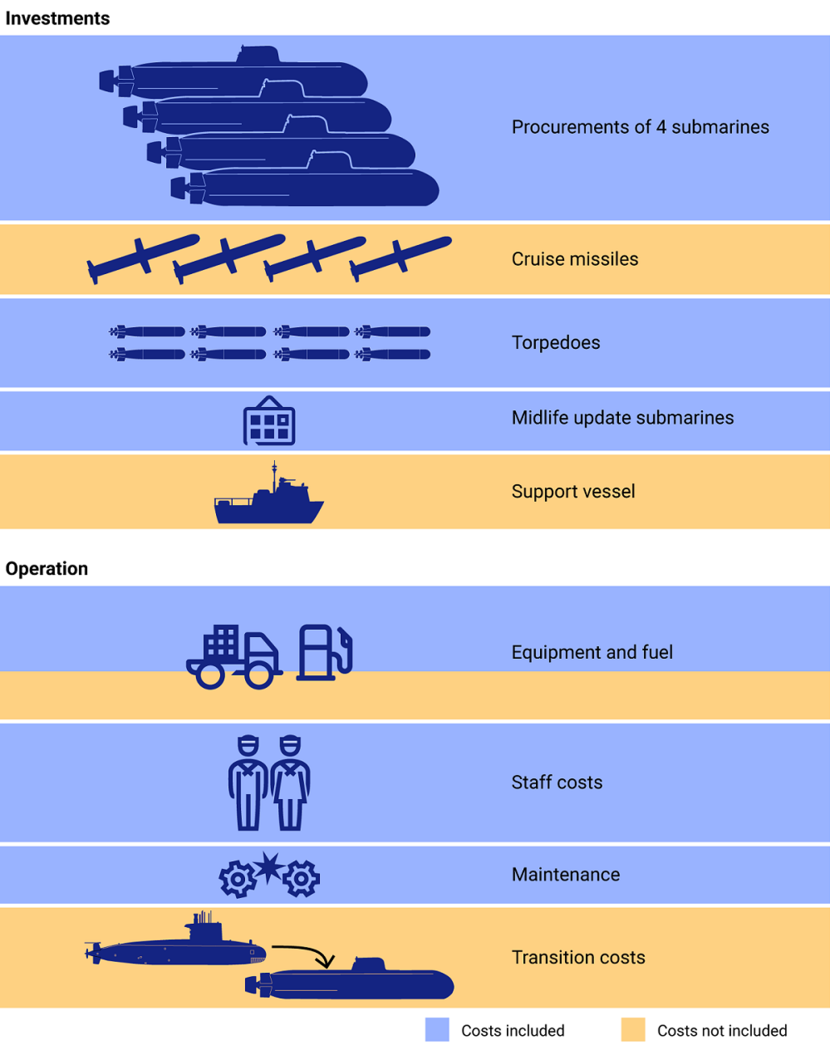Provisional award decision for new submarines: careful and transparent
The Minister of Defence’s decision to procure 4 new submarines from Naval Group was taken carefully and in accordance with the rules. The Netherlands Court of Audit comes to this conclusion following an investigation of the award process. We also conclude that the minister has not provided up-to-date information on all lifecycle costs, for instance for weapon systems and operation. The overall budget necessary for the submarines will therefore be higher.
The replacement of 4 Walrus-class submarines will be one of the ministry’s biggest projects in the years ahead, costing billions of euros. The Netherlands is not buying submarines off the shelf. The Court of Audit also investigated the financial risks and how adequately the minister had informed parliament. Parliament can draw on the Court’s audit in its debates on the submarines’ procurement.
Careful assessment of tenders against several criteria
The minister carefully followed the process in place to assess tenders for the construction of the new submarines. Firstly, the ministry determined whether the tenders met the validity criteria that every tender must meet to be included in the rest of the assessment process. The criteria are based on the ministry’s intended use of the submarines, for instance with regard to dive depth. They must ensure that the ministry gets what it needs to meet its requirements. The ministry also set delivery time criteria.
Secondly, an award model was prepared based on a price/quality ratio. The tenders earned points for extra quality and functionality (such as more space for ammunition or special forces) and lost points for exceeding the ministry’s guide price. As the differences in the tendered prices were higher than foreseen (resulting in the loss of points), the price weighed more heavily in the price/quality ratio.
Thirdly, the Ministry of Economic Affairs and Climate Policy assessed the involvement of Dutch companies and knowledge centres in the procurement and maintenance of the new submarines. The candidate shipyards in the award model were specifically rewarded if Dutch companies developed or supplied critical systems. The award model granted a small number of points for the involvement of Dutch companies.
Costs not clear to parliament
The overall budget for the submarines has been increased several times and is currently four times higher than the initial estimate. Calculations by the Court of Audit reveal that when all aspects of the entire submarine service are taken into account, the ultimate cost will be at least €638 million higher than the amount the minister told the House of Representatives. Additional costs will be incurred for the procurement and operation of cruise missiles, support vessels and torpedoes. These will be necessary for the new submarines’ continued operational capability and deployment. Money, however, has been reserved for them on other parts of the defence budget.
Costs are incomplete

No up-to-date information on operating costs
Additionally, parliament has not received up-to-date information on the submarines’ operating and maintenance costs, as the minister did not base the procurement on lifecycle costs. Unlike the procurement’s investment budget, the operational budget has not been updated since 2019. There is also a risk that shipyards will choose options that reduce construction costs but increase maintenance costs and a risk of compulsory sourcing.
In a 2020 report on the submarines’ replacement, the Court of Audit outlined the risk that operating cost estimates were too low, given comparable examples with new submarines abroad. The minister seems to share this opinion because more than 50% of the risk reserve and the underlying risk file relate to risks during the operational phase. The uncertainty of operating costs is therefore currently higher than average.
Decision for 4 submarines not underpinned by NATO requirement
Another finding presented in the 2020 report was that the project organisation had concluded that 3 submarines would have been enough to carry out the proposed tasks. The minister did not agree with this analysis and thought at least 4 were needed for reliable and sustainable deployability. The Court of Audit found no underpinning for this decision on the number of submarines.